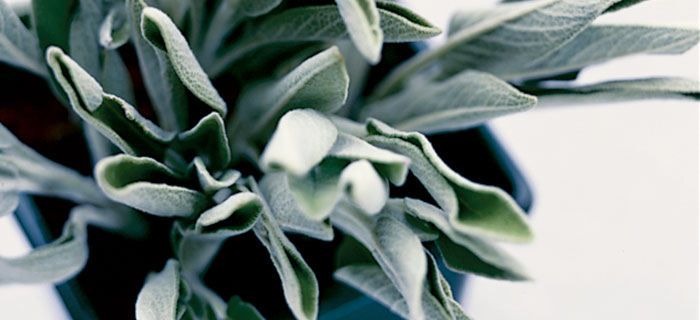
Pronounce it: sa-age
Popular in both Italian and British cookery, sage has long, grey-green leaves with a slightly furry surface. Its aroma is pungent and it has a strong, slightly minty, musky taste. Traditionally, it’s used to flavour sausages and as a stuffing for fatty meats such as pork and goose. A little goes a long way – and it’s never used raw.
Availability
All year round. Buy a pot from your local greengrocer or garden centre and keep a ready supply.
Choose the best
Look for fresh leaves with good aroma and colour, with no wilting or brown patches. Common sage has a deep, earthy flavour and aroma but you can also buy pineapple sage which, as you might expect, has a sweet pineapple scent (though the flavour is more like common sage); purple sage, which has a milder flavour; and the equally mild tricolour sage, which has a variagated leaf of pink, cream and green. Dried sage is also available.
Prepare it
Pick the leaves from the stem, wash, then use whole or chop.
Store it
Fresh cut sage should be wrapped in kitchen paper, placed in a perforated bag and stored in the fridge. It will last for up to 3 days. Dried sage should be kept in an airtight container and stored in a cool, dark place. It will last from four to six months. Pots of sage will survive well on a protected, sunny window sill.
Cook it
Add to pasta sauces; use for meat or poultry stuffings; quickly fry in butter and use as a garnish for risotto or pumpkin dishes.
Alternatives
Try rosemary or thyme.
Be the first to comment on "Sage"